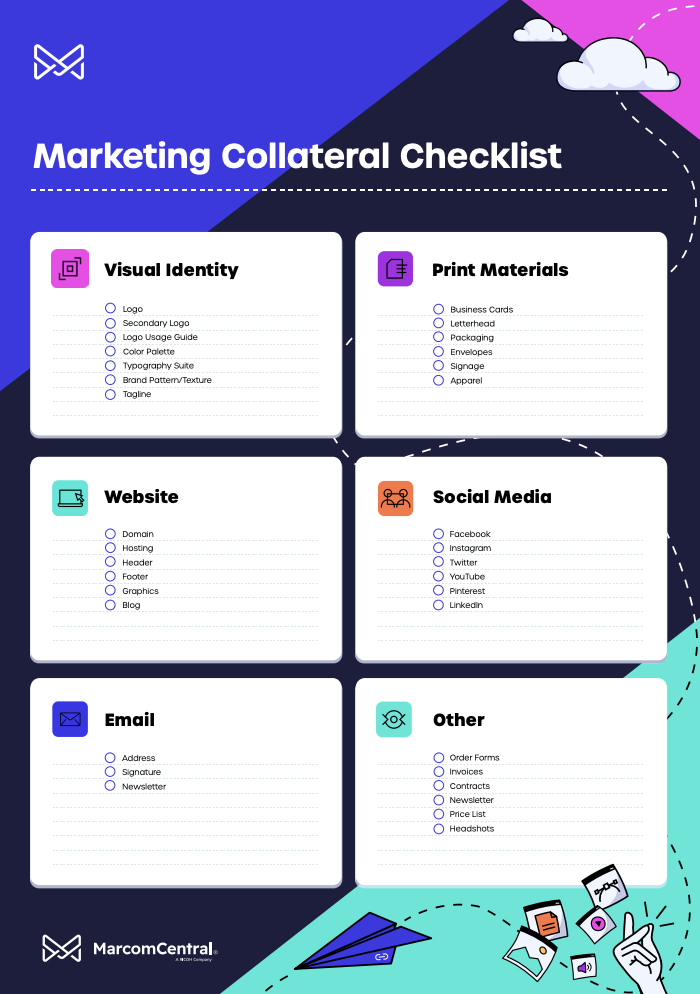Get news, updates, and insights delivered straight to your inbox.
What is Marketing Asset Management (and Why Should Growing Businesses Care?)

To maintain growth, every business must continuously find ways to reach customer segments using personal, relevant messaging – no matter what channels customers prefer.
To achieve this, 92% of companies now view marketing content as a critical business asset, one that exists in many formats; social media posts, email marketing templates, PowerPoint slides, direct mail, physical assets, signage and more.
Increasingly, the challenge of managing this content is no longer solely the domain of IT. As marketing functions take ownership of a unified customer experience and meeting customer expectations, content management has emerged as a major marketing concern. Decentralized and fragmented content management processes can cripple brand consistency, impeding relevant communications with target audiences.
According to the Content Marketing Institute, only 18% of companies feel their organization has the right technology in place to manage their content marketing efforts. Another 45% say they have technology tools, but aren’t using them to their potential.
Content Fragmentation is a real problem.
The rise of multi-channel marketing and content development creates a conflict for organizations: As a business grows, more and more marketing assets are created. At the same time, Sales and Marketing needs to personalize these assets to better resonate with each audience segment. What results is often a matter of out-of-control marketing content with inconsistent branding, or improper, out-of-date messaging.
The more content that is developed, the greater the danger of content fragmentation – when sales and marketing content fails to consistently convey a brand and its core messages reliably. This fragmentation can directly impact the bottom line and result in some serious consequences:
- When content is fragmented, only 15% of study participants say it meets buyers’ needs well during their journeys.
- 66% of companies lose sales when needed content isn’t available
- Over 25% of sales teams often, or always, create content without waiting for marketing to do it (increasing the risk of improper branding and messaging).
“Poor content management ranks as the number one reason that organizations struggle with multi-channel marketing communications and brand consistency.”
Marketing Asset Management is the solution to content fragmentation.
As a business grows, its priority becomes how to build a solid infrastructure of systems and processes that provide sustainable growth. One critical improvement is the way an organization manages digital assets for marketing and makes them accessible across the organization.
Today:
- Fragmented systems
- Legacy applications
- Excessive dependence on shared drives or personal hard drives
All lead to brand consistency challenges and cumbersome marketing cycle-time on campaigns.
Marketing Asset Management (MAM) is software designed to address specific content management needs of marketers. Within a MAM platform, marketers are able to take full control over their assets. Ensuring digital assets (content, videos, images, etc.) are organized and ready for use and re-use. Having a designated MAM platform really benefits marketers by saving them both time and money.
These platforms are unique because they have out-of-the box capabilities designed to empower field and local marketing resources with the tools required to personalize communications with local audiences – while still allowing corporate to govern brand consistency, customer preferences, and communication frequency.
As defined by Gleanster, Marketing Asset Management includes:
- Digital Asset Management capabilities
- Dynamic templates
- Integrated workflow for creative development and approval
- Integration with creative tools
- Searchable access to digital assets
- Digital asset metadata
“Organizations are increasingly finding it difficult to manage the chaos of multi-channel content production with organically developed processes (and disparate technologies) that often fail to optimize marketing efficiency or effectiveness.”
Content management technologies like Marketing Asset Management give marketers the ability to manage content creation and execution across a growing array of online and offline channels, as part of globally distributed marketing operations.
As companies compete on the basis of customer experience, it’s imperative that they deploy technologies and analytic capabilities that make it possible to serve up relevant marketing messages and offers by narrowly-defined customer segments and target audiences.
Who benefits from Marketing Asset Management?
As mentioned above, marketing asset management gives teams the ability and reliability of accessing all necessary digital marketing content. This accessibility allows teams to save time, money, and resources. Additionally, by having a centralized platform for digital assets, teams are able to boost collaboration and creativity.
Large, multi-national and regional organizations are tasked with maintaining a consistent brand look and unified customer experience across channels. Corporate marketing is charged with overseeing this responsibility, while local and field marketers need the autonomy and flexibility to reach local target audiences, driving revenue through personalized marketing at the local level.
91% of Top Performers cite the need to “increase relevance and personalization in localized markets” as the top reason to invest in Marketing Asset Management.
Marketing Asset Management gives corporate marketing a controlled repository of digital assets and branded, multi-channel templates (email, print, form capture, and more). Local marketers can then customize and create brand-approved assets or campaigns that meet the needs of local target audiences.
Anyone needing to create, distribute, or otherwise use branded content benefits from the implementation of a Marketing Asset Management technology. That includes Sales, partners, resellers, print providers, dealers, agencies, and branch managers, who all perform their responsibilities better with access to approved, customizable, branded collateral. These teams also benefit when Marketing is able to respond quickly to content requests.
Overall, an investment in Marketing Asset Management can be justified through increases in marketing productivity and revenue growth, by increasing effectiveness through personalization. Marketing Asset Management empowers local marketers with autonomy and customization while maintaining brand consistency at a corporate level.
The ROI of Marketing Asset Management
Content is 2X more successful in addressing the needs of the customer when Marketing is agile in responding to content requests. What’s more, content is 3X more consistent when marketing is more agile in responding to creative requests.
Organizations are also maximizing their investment in Marketing Asset Management by:
- Eliminating the use of multiple marketing asset repositories (62%)
- Providing geographically dispersed sales teams with streamlined marketing support (47%)
- Improving communication between corporate and local markets (33%)
- Automating digital asset creation and approval (28%)
These capabilities drive real, tangible return on investment. Gleanster’s research has found that the average Top Performing organization has generated 2-3 times higher local revenue after implementing a Marketing Asset Management technology. What’s more, local agency costs have been reduced by as much as 75%.
In today’s day and age, when four out of five organizations struggle with managing online and offline content assets, Marketing Asset Management is a critical piece of marketing technology infrastructure, one that improves brand consistency, reduces costs, and improves revenue.



